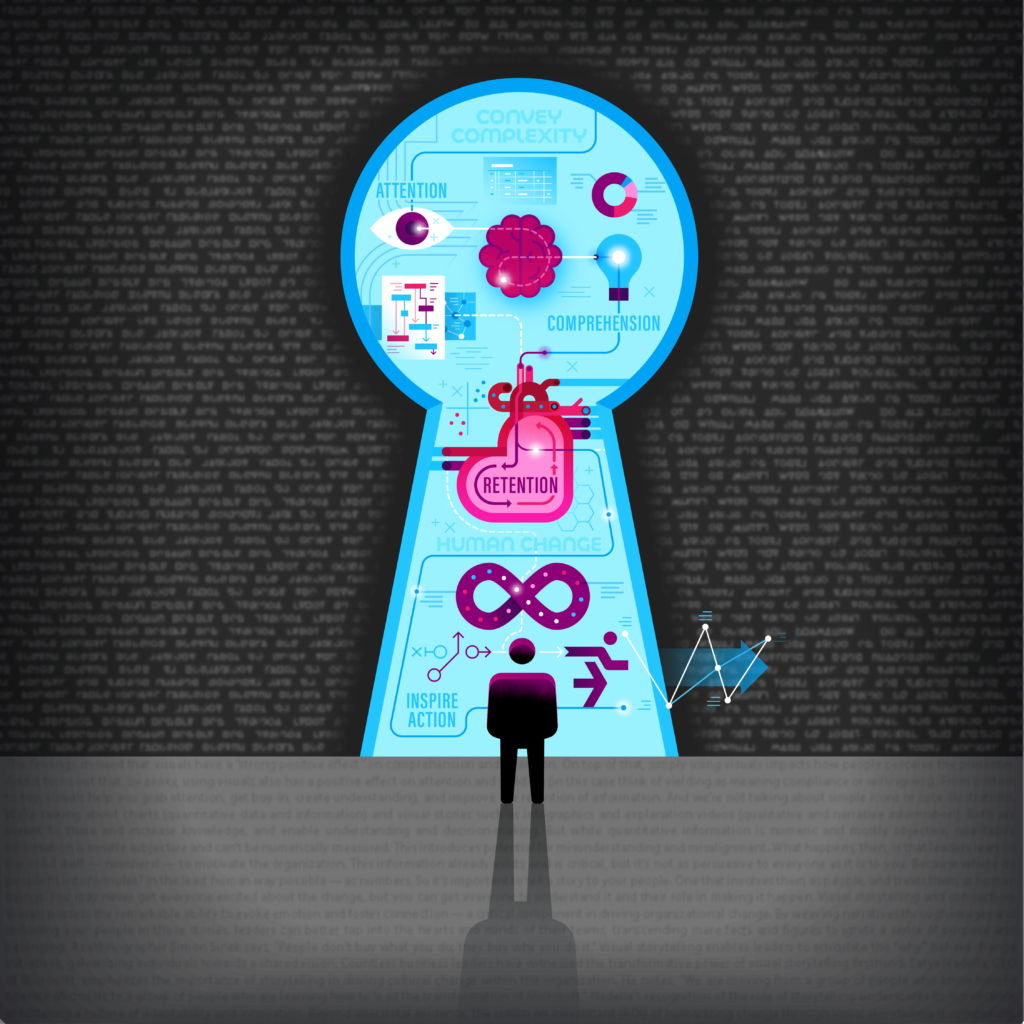In uncertain times, visual storytelling is a catalyst for confident leadership and smarter growth
How to get from ‘R U serious?’ to ‘ROI!’
Leading a modern organization isn’t just about keeping things running — it’s about keeping things moving. Adapting. Evolving. Explaining.
In today’s environment — with economic uncertainty, institutional distrust, political extremism, and rapidly shifting expectations — the biggest challenge isn’t execution. It’s alignment. It’s getting people to see the same future, believe in it, and move toward it together.
That’s where visual storytelling comes in.
When everything is changing, clarity is your most valuable asset
Big ideas typically fail not because they’re wrong, but because they’re misunderstood. As markets, technologies, and even democracies become more fragile, organizations face bigger questions:
- What’s important to us?
- Where are we going?
- Why does it matter?
- How do we get everyone onboard?
Still, many organizations try to face new challenges with outdated assumptions, vague messaging, or overly complex plans. But the comfort found in the familiar — especially amidst turmoil — won’t keep you comfortable for long.
“The greatest danger in times of turbulence is not the turbulence — it is to act with yesterday’s logic.”
—Peter Drucker
In a high-stakes, high-noise context, leaders don’t just need a plan — they need people to believe in it. Visual storytelling helps by turning abstract goals into tangible understanding. It cuts through the fog, sharpens intent, and builds momentum.
Visuals don’t just explain — they persuade
There is oft-cited 3M research that claims “visuals make you 43% more persuasive”. This is shaky (and decades old). But there are kernels of value there. A more rigorous follow-up study found that visuals have a strong positive effect on two key things:
- Comprehension
- Retention
They also improve how people perceive the speaker — which, in turn, increases attention and buy-in. Not bad for some well-crafted visuals.
“Interestingly, the use of visuals does tend to produce a higher regard for the presenter on the part of subjects, which, in turn, correlates with improved attention and yielding.”
—The Jury Expert
But let’s be clear: we’re not talking about stock photos or cutesy clip art. We mean meaningful tools — infographics, diagrams, models, explanation videos — designed to help people understand, remember, and act.
The danger of relying on data alone
Data is powerful, but it’s also cold. Charts show the what — not the why. And if your strategy only speaks in spreadsheets, don’t be surprised if your people don’t feel part of it.
That’s why visual communication matters — it helps people speak the same language. Why? People need to see themselves in the change. And not as metrics. As humans.
Storytelling connects hearts to minds
Done well, visual storytelling builds emotional clarity — a shared sense of purpose that outlasts buzzwords. It can make values visible, rally teams, and build culture. Here’s how Microsoft’s CEO describes the shift:
“We are moving from a group of people who know how to operate Microsoft to a group of people who are learning how to lead the transformation of Microsoft.”
—Satya Nadella
Storytelling was central to that transformation.
Yes, there’s ROI
According to Towers Watson, companies that communicate change effectively are 3.5x more likely to outperform peers financially. Why? Because good communication isn’t just about updates — it’s about learning, trust, and belief.
And that’s what visuals do. They give people something to hold on to.
That’s not design fluff. That’s strategic clarity.
If the intelligence is artificial, then it’s not human
You’ve probably heard about becoming an “intelligence-driven organization” — which usually means more dashboards, more data, and more AI.
“Data can point you in the right direction, but it can’t make you care.”
— Dan Heath
But if you want smarter systems and smarter people, you need tools that help people think, not just react. Visual storytelling is one of those tools. It translates complexity into clarity, helps people navigate change, and builds shared understanding across teams.
The takeaway
In unstable times, storytelling is not a luxury. It’s leadership.
When things feel uncertain — economically, politically, organizationally — clarity becomes a competitive advantage. And visual storytelling is one of the most effective ways to build it.
Never assume people understand what you’re trying to do. Make it obvious. Make it visual. Make it make sense.
Want to see how this can benefit your org? Let’s talk.
Illustration by Chris Roettger / Tremendousness
